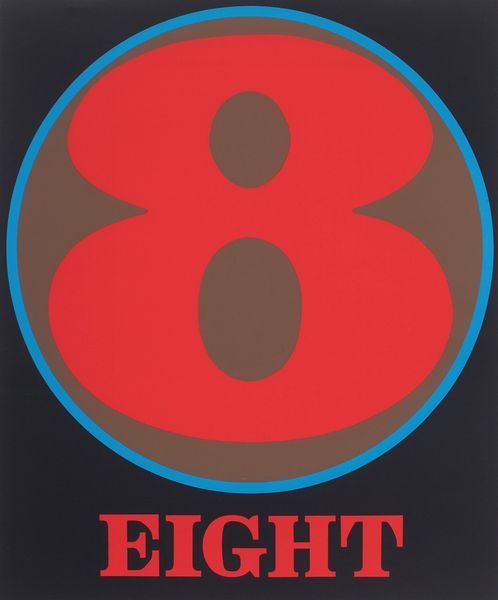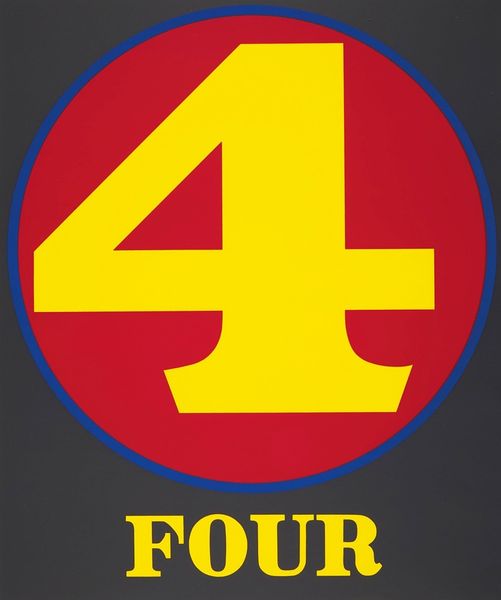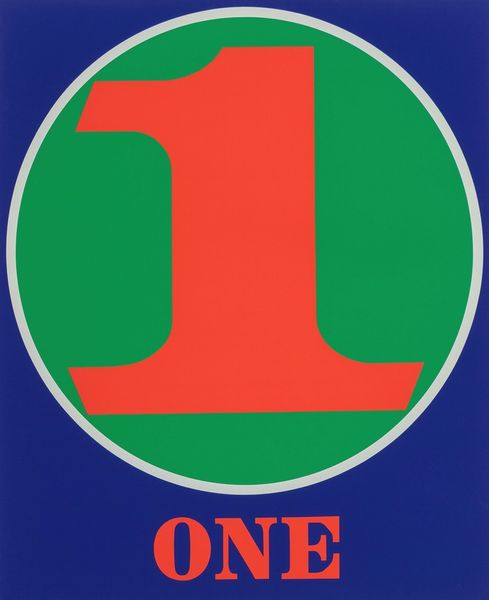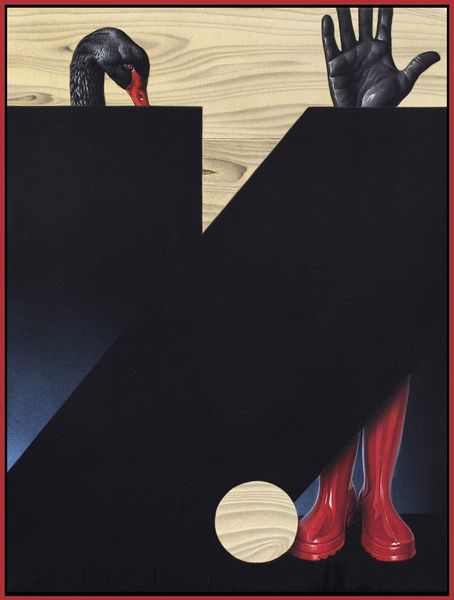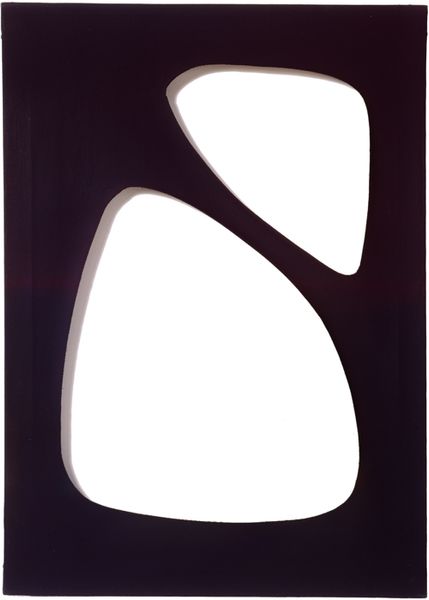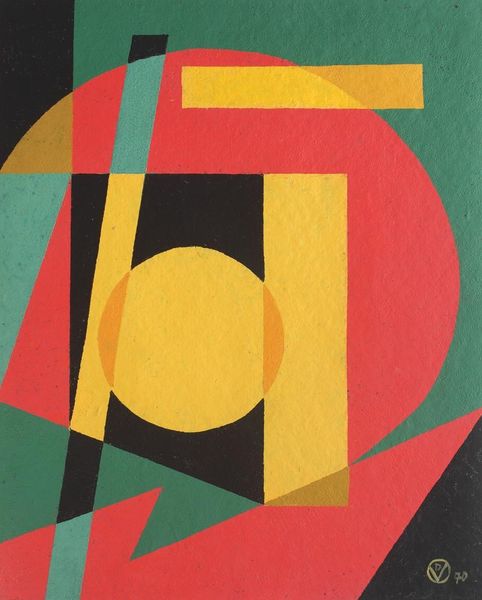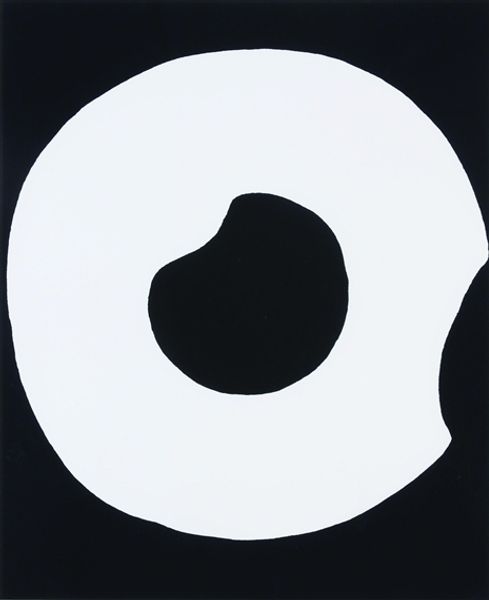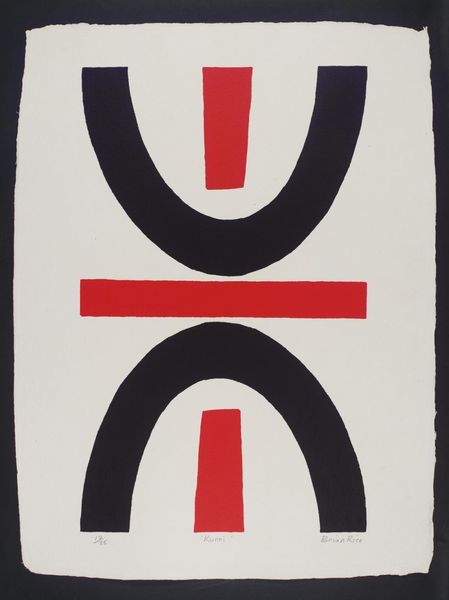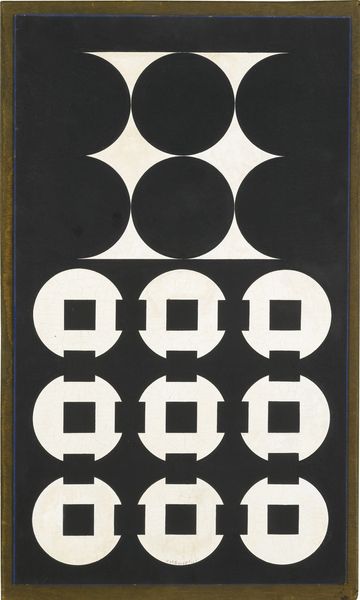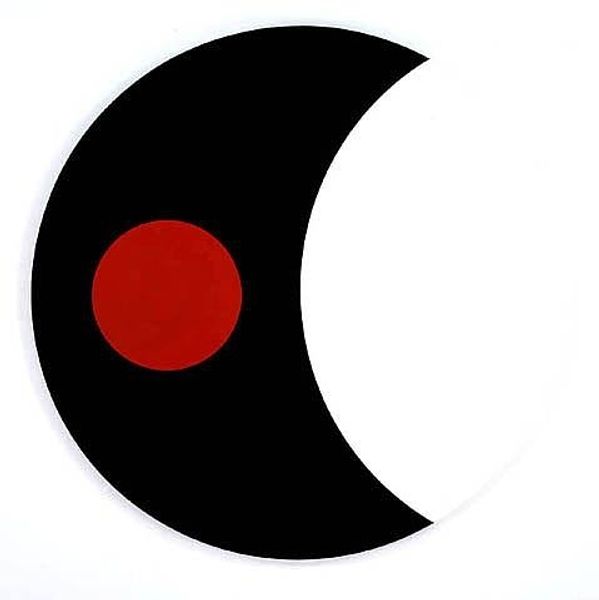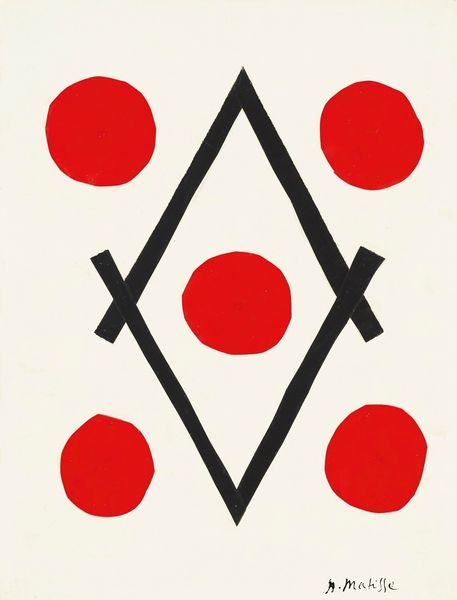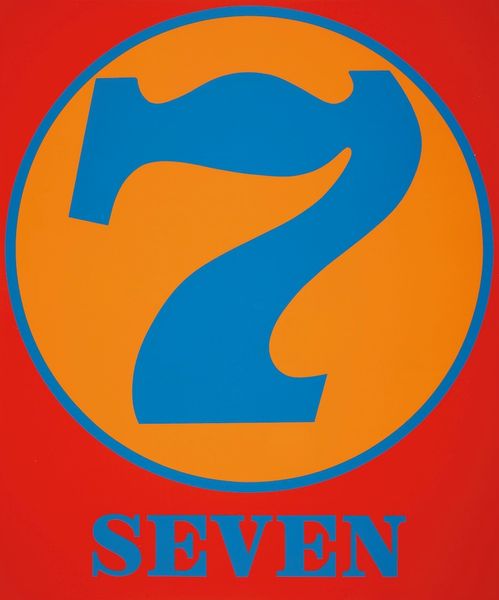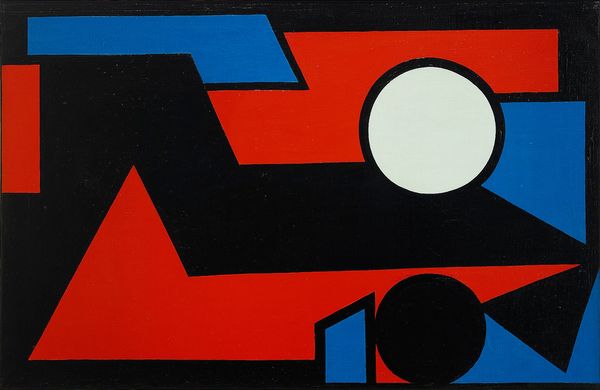
acrylic-paint, typography
#
pop art
#
acrylic-paint
#
typography
#
geometric
#
abstraction
#
pop-art
Copyright: Modern Artists: Artvee
Curator: Let's turn our attention to Robert Indiana's "Numbers #8," painted in 1968. Indiana was a key figure in the Pop Art movement. The painting features bold, simplified typography in acrylic. What's your immediate take on this one? Editor: It hits me as almost an advertisement for the number eight itself! There's something very assertive and confident in the geometry and the sharp color contrasts. But the combination of brown and red is making me uneasy - perhaps recalling commercial brands or traffic signs in a subconscious way. Curator: Indeed! Indiana often borrowed from the visual language of advertising and highway signs. He elevated everyday words and numbers into iconic symbols. In the '60s, the highway was a huge part of American culture and identity, promising freedom and access. How does the number eight function as an icon here, beyond just its mathematical value? Editor: Numbers carry so much cultural baggage. Eight is about completion, infinity, symmetry. It almost has an esoteric, magical feel. It is often connected to balance and good fortune across cultures, while other times might indicate things repeating in patterns. The closed loops create a feeling of wholeness and being self-contained, like an Ouroboros of sorts. I am interested if Indiana intentionally played into it. Curator: Indiana was deeply interested in how numbers and words operate within a larger social context. In a consumer culture obsessed with counting and quantification, Indiana uses the bold clarity to disrupt conventional meaning. He brings into question consumer culture in a very clear manner. The bright colors were inspired by his memories of roadside signs that populated the American landscape. Editor: Roadside attractions, consumer culture, magical symbol; "Numbers #8" presents an entire system of cultural iconography around this one numeral. The interplay between what we immediately recognize and the depth of the symbolism is striking. It prompts one to question our attachment to, and dependence on these structures of communication. Curator: Absolutely. The scale is imposing as well, further adding to this strange sense of being in the thrall of common symbology. As such, what do you take from this brief look? Editor: To look closer at all these symbols around us! The numbers, colours, words, shapes. They’re loaded with intent. Indiana does make us think. Curator: Very true. A deceptively simple yet richly layered commentary on our relationship with language and number.
Comments
No comments
Be the first to comment and join the conversation on the ultimate creative platform.
